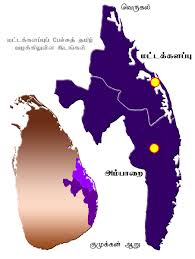(*Some names have been changed on request)
People in Batticaloa, one of the poorest districts in Sri Lanka, are badly hit by ‘predatory’ microfinance loans with exorbitant interest rates
“First, it was the tsunami that destroyed our community. Then came the war. Now, it’s microfinance.” That is how Jesudasan Rajitha describes the growing web of debt that is trapping people of this district on Sri Lanka’s east coast.
Ms. Rajitha is with the federation of women’s rural development societies, which focusses on economic concerns of women. “Not a day passes without someone telling me that they are struggling with a huge debt,” she says about the district’s now-famous “debt story”. The problem of rural debt pervades the country’s post-war north and east, but Batticaloa, one of the poorest districts with the lowest mean monthly household per capita income of LKR 6,270 (roughly ₹2,630) in the country, appears the worst-hit.
People here witnessed enormous bloodshed in the final leg of the civil war, especially after the LTTE’s eastern commander Karuna Amman broke away from the organisation in 2004. Just as a tentative normalcy began returning after the war ended, scores of microfinance companies set up shop to “boost entrepreneurship” and revive the economy. But what they really promoted was a culture of hapless borrowing among the people, if the current situation in Batticaloa is any indication.
Pushed to the brink
Raja*, 39, speaks matter-of-factly about his plan to sell his kidney. He has already made inquiries about the necessary medical tests and the price his kidney might fetch. “They say I will get LKR 8-9 lakhs (about ₹3.7 lakhs), but even that won’t be enough to fully repay our loan,” says the lean man as he and his wife Chithra* talk about their outstanding debt of LKR 15 lakhs (about ₹6.3 lakhs), through five loans from microfinance companies and local money-lenders.
“See this,” says Ms. Chithra, handing out laminated cards given by the companies, where five-digit figures in dark blue ink stare from the top. Unlike nationalised banks, microfinance companies give credit with very little paperwork and no collateral security. It is common to find women, who have taken one loan to close another, caught in tedious repayment cycles of four to five loans. The agents not only parade the villages to sell microfinance loans at people’s doorsteps, particularly targeting women, but are also notorious for their aggressive ways of recovering them.
Before 9 every morning, the 32-year-old Ms. Chithra hurriedly gets ready with her four children to leave for her parents’ home, about an hour’s bus-ride from Thiruperunthurai village, where she lives. She returns well after sunset and remains indoors all evening to escape the agents’ “harassment”. “One of them told me why don’t you die if you can’t repay your loan,” says Ms. Chithra. Not that she did not consider the option earlier, but the thought of the children stopped her.
The couple is stuck. Though Ms. Chithra recently joined a garment factory — the only one in the district — for a basic monthly salary of LKR 13,500 (roughly ₹5,600), she fears going to work as she might have to encounter the companies’ agents on the way. Mr. Raja works as a mason but cannot be sure of finding employment every day.
Vicious cycle
As many as 27 microfinance companies have branches in Batticaloa, say officials at the District Secretariat. Amid increasing incidence of suicides in Batticaloa in the last five years, many reportedly linked to the burden of mounting debt, the district’s Government Agent (corresponds to collector in India) P.S.M. Charles raised the matter with the Centre in 2012 and sought regulation of interest rates. “I tried my best to bring it down to 14%, but could not pursue it beyond a point because of political pressure.”
With hardly any job creation or investment inflow after the war, microfinance loans have assumed a predatory character, Ms. Charles notes, adding that families take them mostly for survival, and seldom for enterprise.
“If people do not have an idea about their meal the next day, how can we talk to them about becoming entrepreneurs?” she asks, seated at her office in the Portuguese-built fort in Batticaloa town.
Batticaloa also has a high rate of migration of workers to West Asian countries. “People take up those jobs because they get up to (LKR) 3 lakh before leaving, which they use to repay an existing loan. It’s a vicious cycle,” Ms. Charles says, pointing to a growing network of illegal migration agencies.
Social breakdown
Microfinance is typically loans for small sums, often group-guaranteed by women taking it. Some are monthly loans, but more recently, companies have introduced weekly loans that women borrow to pay off monthly loans.
While the companies claim on paper that they charge a 28% interest, the women begin paying part of the principal and the interest from the first week itself, their total interest effectively amounting to 69%.
The culture of loans is a huge strain on the community and has caused a social breakdown, say women in Kokuvil village.
“Even if the husband signs as guarantor, ultimately the woman alone is blamed for defaulting,” says 27-year-old Hema*, who sold her land and house to repay her debt partly. “These weekly loans should just be abolished,” she says angrily.
Multiple borrowings
Acknowledging there is a problem “of multiple borrowings”, honorary secretary of the Lanka Microfinance Practitioners’ Association Imran Nafeer says the post-war north and east were “conducive” for microfinance.
“Such loans can give immediate relief to the community. There are many good things about microfinance, but bad things come fast.”
While the association is encouraging members to adopt ethical recovery strategies, the Central Bank alone has the authority to take action, he says. In May, Sri Lanka’s the Central Bank said it would undertake a study on household indebtedness in the north and east. Meanwhile, families like Ms. Chithra’s are getting sucked into a quicksand of debt.
Courtesy: The Hindu


